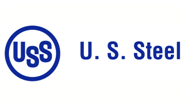Steel Products

Leibowitz on Trade: Trump’s Tradeoff—Tariffs vs. Quotas
Written by John Packard
March 10, 2019
Trade attorney and Steel Market Update contributor Lewis Leibowitz offers the following update on events in Washington:
President Trump may be forced to concede some ground on his Section 232 tariffs in order to get legislators in Canada and Mexico to sign off on the new North American trade agreement. One option the administration reportedly is considering is replacing the tariffs on Canada and Mexico with some form of quota. Which raises the questions: How do quotas differ from tariffs and what would that mean for U.S. steel prices?
The subject is actually quite complex from an econometric point of view. But in simple terms, tariffs are a tax on imports that raise the cost of foreign goods. With less competition from imports, domestic suppliers may raise their prices above pre-tariff levels. Thus, the tariffs are paid for by the consumers of the material, not the countries subject to the tariffs. When prices increase, buyers tend to purchase less. So, tariffs have a direct effect on pricing and demand, economists explain.
Quotas, on the other hand, have a less direct effect on price because there is still competition between foreign and domestic goods until the foreign suppliers hit their limit on exports. With quotas, there is always the possibility the market will run short of import supply. Quotas tend to shift demand forward as buyers place orders early, which may benefit buyers but will increase inventory carrying costs. Service centers often stock up on inventory when quota merchandise can come into the country. Domestic producers are able to raise their prices because of the anticipated shortages. So, both tariffs and quotas affect demand and pricing of imports and domestic product.
A big difference is that tariffs generate revenue for the U.S. Treasury. How much is difficult to measure. Twenty-five percent of the roughly $30 billion in steel imports in 2018 would amount to $7.5 billion. But some amount of imports not subject to the tariff and those granted exclusions, a figure not publicly available, must be subtracted from the total. In the end, the revenue is not very significant. Something less than $7.5 billion in tariffs, which are entirely paid by U.S. importers and largely passed on to domestic end users, comprise less than 0.25 percent of federal revenues.
With quotas, the higher steel prices for imports go to the foreign sellers in the form of higher import prices. These higher prices are passed along to U.S. end users. Domestic mills will receive higher prices as well.
On the surface, replacing tariffs with quotas should benefit steel users, said Andreas Bokkenheuser of UBS Global Research. A tariff-free (lower) steel price should ease cost and working capital pressure on manufacturers and service centers, likely improving demand.
Then again, quotas can be worse than tariffs for end users in certain circumstances, he said. While higher prices are commonly assumed to apply only to product brought in when quotas are about to be filled, the market reality is harder to gauge. Even at the outset of a quota period, the impending limits on imports can have an effect on prices. If shortages are not anticipated, a sudden lack of supply, of course, can cause market prices to spike.
The energy sector is complaining about tariffs and quotas because shortages of oil and gas pipe (both line pipe and OCTG) can crimp plans for new drilling and production. Certain specialized energy-related products are only available from foreign sources. While product exclusions are a theoretical way to manage these specialized products, there have been a large number of domestic industry objections, which claim the ability to produce many of these products with little or no factual support. This could end up weighing on overall manufacturing/industrial production and, in turn, steel demand and prices, Bokkenheuser said.
The tariffs and quotas were imposed by presidential edict and may be repealed just as quickly. Bokkenheuser notes, “If there’s a ‘change in management,’ it could raise the risk of Section 232 being repealed, in our view, at least against U.S. allied nations. These include Canada, Mexico and Europe, which are the largest steel exporters to the U.S., accounting for almost 50 percent of U.S. steel imports. This may explain why U.S. steel producers continue trading at a 10-15 percent discount to spot HRC prices.”
Steel prices have moderated since the sudden run-up last year. If Canada and Mexico receive an exemption from tariffs and quotas as a result of the new USMCA agreement, the domestic price effects could be substantially reduced. However, if the tariffs are replaced by quotas such as those agreed to by Brazil and South Korea (70 percent of the three-year average), prices could resume their upward march. Canada and Mexico have said that they insist on exemptions as a condition to ratify the USMCA.
It is hard to say whether tariffs or quotas are more disruptive to markets and trade. It depends on the magnitude of the tariffs and the quota limits imposed. Based on these variables, the Section 232 steel tariffs are probably less burdensome to consumers than across-the-board quotas at 70 percent of the three-year average of imports.
Lewis Leibowitz
The Law Office of Lewis E. Leibowitz
1400 16th Street, N.W.
Suite 350
Washington, D.C. 20036
Phone: (202) 776-1142
Fax: (202) 861-2924
Cell: (202) 250-1551

John Packard
Read more from John PackardLatest in Steel Products

US and Canadian rig counts inch higher
Baker Hughes reported higher oil and gas drilling activity this week in both the US and Canada.

Global steel production falls to near two-year low in September
World crude steel output declined for the fourth-consecutive month in September, slipping 3% from August to an estimated 141.8 million metric tons (mt), according to the latest figures from the World Steel Association (worldsteel).

Market sources say regional activity is dictating plate demand
Demand for plate on the spot market remains soft by comparison to years past. However, this week regional demand variations grew more pronounced.

Battery #14 at USS Clairton to restart on Oct. 23
U.S. Steel plans to restart battery #14 at the Clairton Coke Works plant on Thursday, ending its idling period. Battery #14 was hot idled following the explosion at coke oven batteries 13 and 14 on Aug. 11. The Mon Valley Works Clairton plant has completed the necessary repairs. It expects the battery to restart during […]

Findings from Clairton investigations prompt USS to revise safety protocols
U.S. Steel (USS) said it’s been strengthening its safety protocols as findings from investigations into the causes of a deadly explosion at USS Clairton Coke Works on Aug. 11 materialize. The Pittsburgh, Pa.-headquartered steel producer stated that an independent investigation conducted by the Environmental Design & Testing Corp (EDT) produced findings aligned with the company’s […]
